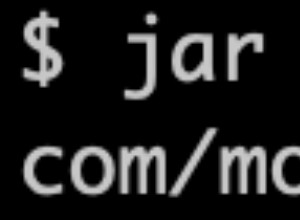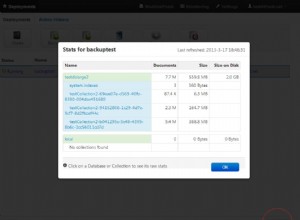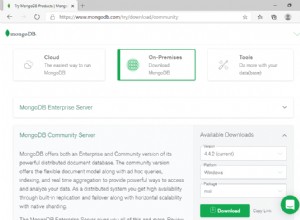Możesz utworzyć niestandardowy serializator do obsługi struktur za pomocą tego kodu:
public class StructBsonSerializer : IBsonSerializer
{
public void Serialize(BsonWriter bsonWriter, Type nominalType, object value, IBsonSerializationOptions options)
{
var fields = nominalType.GetFields(BindingFlags.Instance | BindingFlags.Public);
var propsAll = nominalType.GetProperties(BindingFlags.Instance | BindingFlags.Public);
var props = new List<PropertyInfo>();
foreach (var prop in propsAll)
{
if (prop.CanWrite)
{
props.Add(prop);
}
}
bsonWriter.WriteStartDocument();
foreach (var field in fields)
{
bsonWriter.WriteName(field.Name);
BsonSerializer.Serialize(bsonWriter, field.FieldType, field.GetValue(value));
}
foreach (var prop in props)
{
bsonWriter.WriteName(prop.Name);
BsonSerializer.Serialize(bsonWriter, prop.PropertyType, prop.GetValue(value, null));
}
bsonWriter.WriteEndDocument();
}
public object Deserialize(BsonReader bsonReader, Type nominalType, Type actualType, IBsonSerializationOptions options)
{
var obj = Activator.CreateInstance(actualType);
bsonReader.ReadStartDocument();
while (bsonReader.ReadBsonType() != BsonType.EndOfDocument)
{
var name = bsonReader.ReadName();
var field = actualType.GetField(name);
if (field != null)
{
var value = BsonSerializer.Deserialize(bsonReader, field.FieldType);
field.SetValue(obj, value);
}
var prop = actualType.GetProperty(name);
if (prop != null)
{
var value = BsonSerializer.Deserialize(bsonReader, prop.PropertyType);
prop.SetValue(obj, value, null);
}
}
bsonReader.ReadEndDocument();
return obj;
}
public object Deserialize(BsonReader bsonReader, Type nominalType, IBsonSerializationOptions options)
{
return Deserialize(bsonReader, nominalType, nominalType, options);
}
public bool GetDocumentId(object document, out object id, out Type idNominalType, out IIdGenerator idGenerator)
{
throw new NotImplementedException();
}
public void SetDocumentId(object document, object id)
{
throw new NotImplementedException();
}
}
Następnie zarejestruj ten serializator dla swojej struktury:
BsonSerializer.RegisterSerializer(typeof(MyStruct), new StructBsonSerializer());




